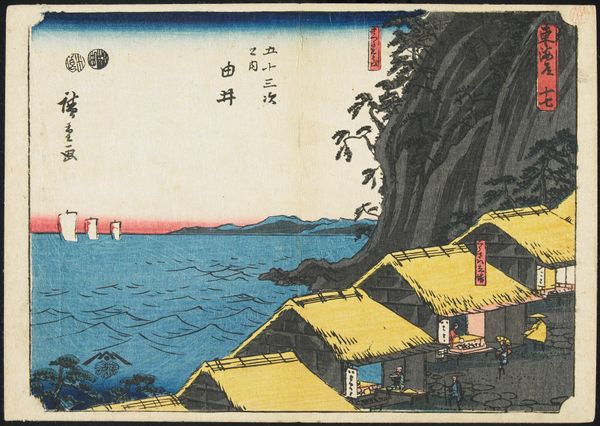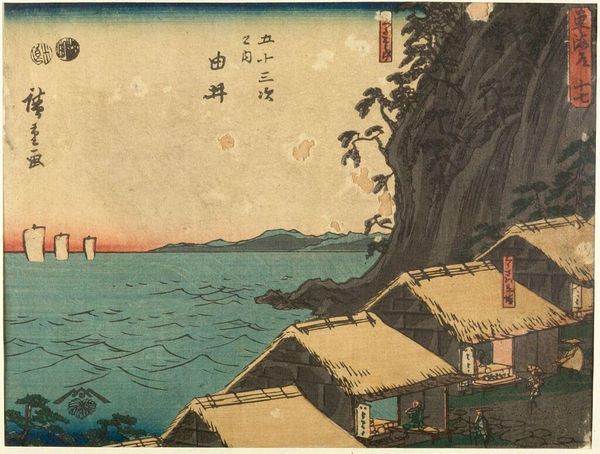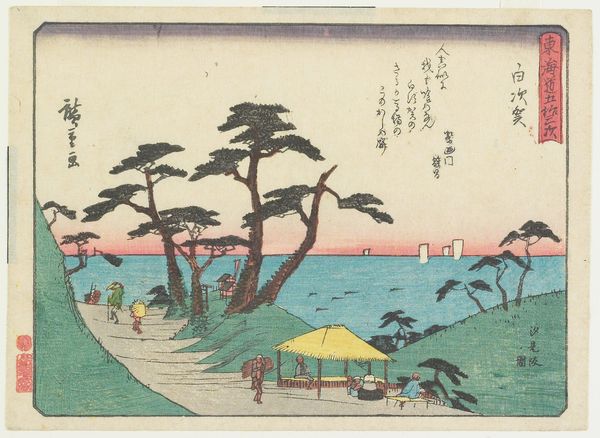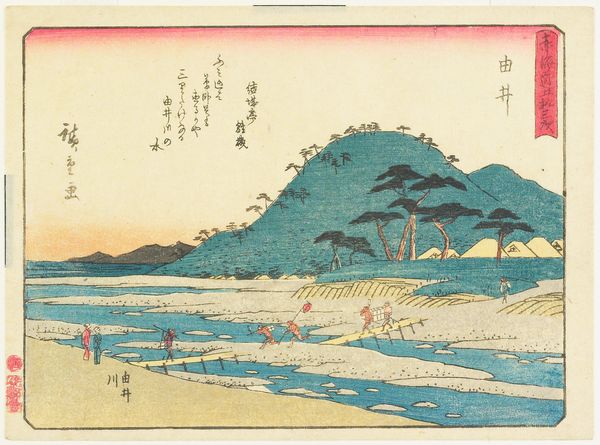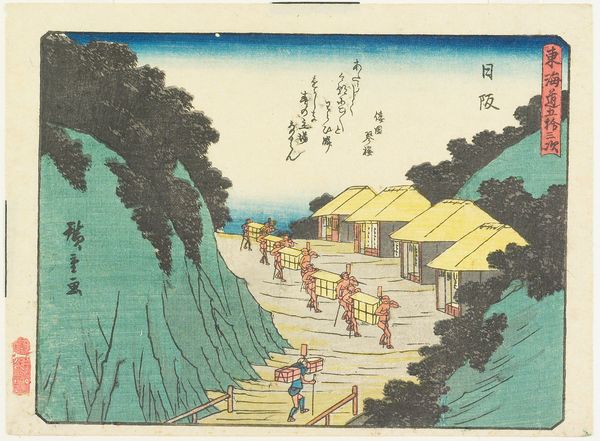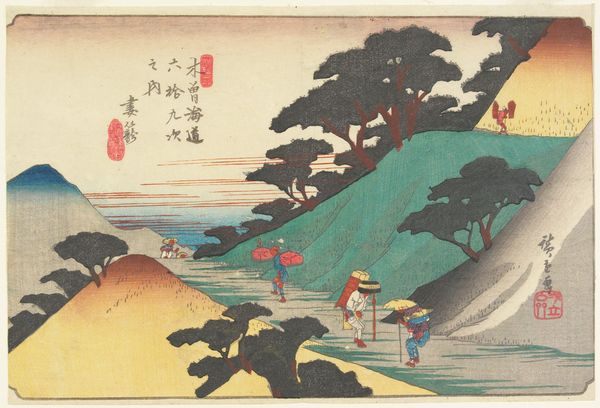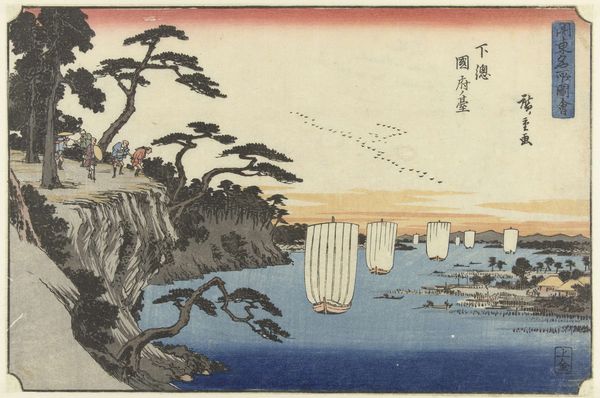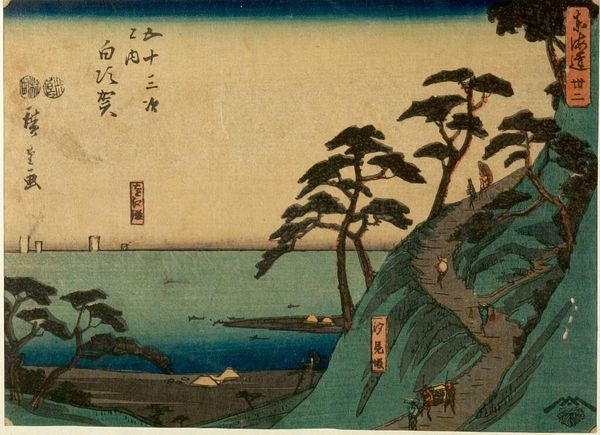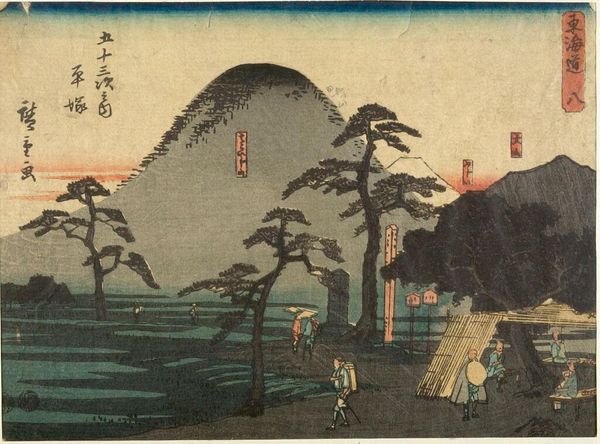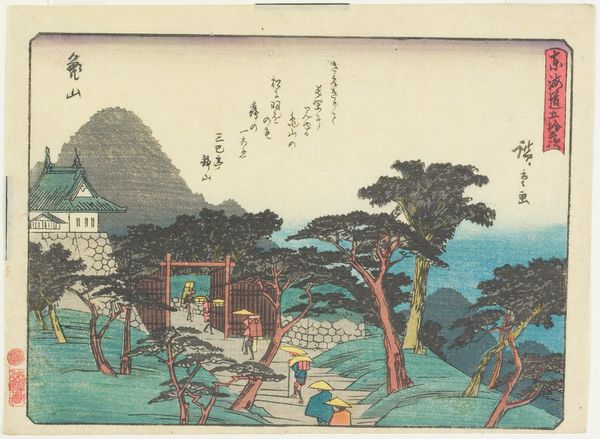
print, ink, woodblock-print
# print
#
landscape
#
ukiyo-e
#
ink
#
woodblock-print
Dimensions: 6 1/2 x 9 in. (16.5 x 22.8 cm) (image)6 1/2 x 9 in. (16.5 x 22.8 cm) (sheet, ,trimmed)
Copyright: Public Domain
Editor: This is Utagawa Hiroshige’s "No.Yui", a woodblock print from between 1847 and 1852. The composition, with those little houses nestled against the large rock face, is just so charming. What symbols or meanings do you find particularly resonant in this work? Curator: For me, it’s all about the layering of visual symbols and how they tap into cultural memory. The seemingly simple scene, the row of houses with their thatched roofs, becomes a vessel carrying immense cultural weight. It’s not just a landscape, but a carefully constructed image loaded with meaning. Editor: Like what, exactly? Curator: Well, think about the concept of "ukiyo-e," the floating world. What does that phrase evoke for you in terms of fleeting beauty and a transient lifestyle? Editor: The fleeting pleasures of everyday life... fleeting like a reflection. I guess these roadside stops for weary travelers connect with that idea? Curator: Precisely! Consider how Hiroshige uses atmospheric perspective—that gentle fading into the distance—to symbolize not just physical distance, but also the ephemeral nature of time. Even the waves, each meticulously rendered, embody a sense of constant change, reflecting life’s ebb and flow. Don’t you find the sunset evokes something of this ephemeral feeling? Editor: Absolutely. And I’d never considered the symbolism of the waves! Now the whole piece has shifted for me. Curator: It's amazing, isn't it? To recognize in visual culture this sort of deep continuity in image making that we all carry unconsciously. Editor: Absolutely fascinating. I'm definitely seeing this piece in a new, much deeper way. Thanks!
Comments
No comments
Be the first to comment and join the conversation on the ultimate creative platform.
